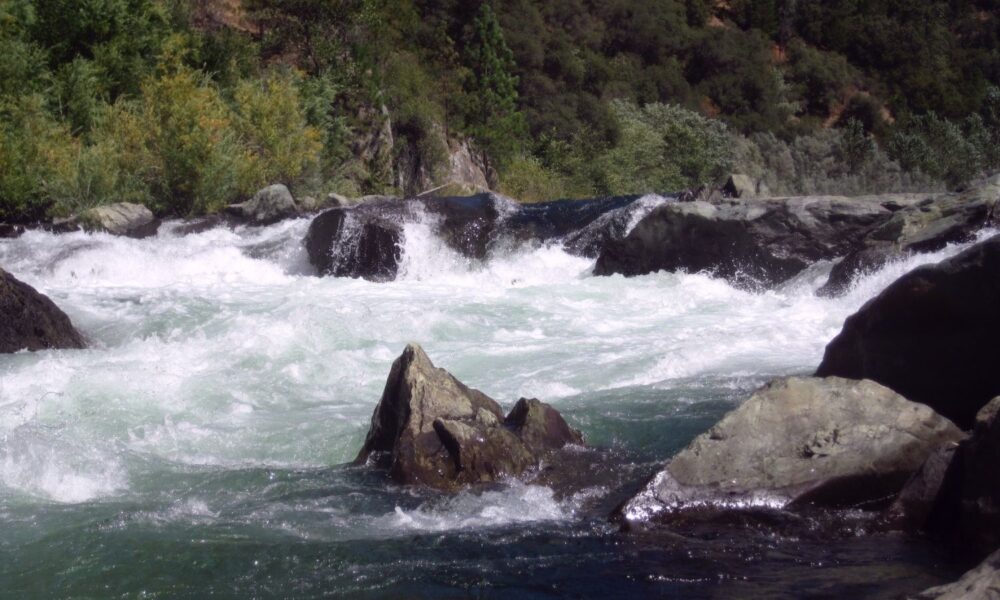Earlier this summer, I wrote about three bills that were poised to make long overdue changes to California’s outdated and inequitable water rights system. Whether you call it updating, modernizing, or reforming, changes to the water rights system have long been considered a political third rail—the electric kind you don’t touch.
This year, one of those water rights bills, Senate Bill 389 (SB 389) made it through the gauntlet of the legislature and will become law if Governor Newsom signs it. The bill would give the State Water Resources Control Board (the Water Board) the authority to verify pre-1914 appropriative and riparian water rights. It passed by a clear majority–58-17 votes in the Assembly and 30-8 in the Senate–and most opposition was withdrawn. UCS joined a broad group of organizations in submitting a letter to Governor Newsom urging him to sign the bill.

Senate Bill 389 allows the Water Board to investigate all water rights
As I wrote earlier this year, the Water Board decides how much water gets diverted from rivers and who gets to use it. The most senior water rights holders, namely holders of pre-1914 appropriative and riparian water rights, have not had to play by the same rules as others. Many senior water rights holders obtained these rights before tribes, people of color, women, and many others had any right to land and water.
SB 389 gives important authority to the Water Board to review, verify, and issue decisions on senior water rights claimed before the Water Commission Act of 1913. If Newsom signs SB 389, the Water Board will finally have the ability to investigate and ascertain the validity of senior riparian and appropriative rights. This means they would be able to confirm whether a claimed right is inflated or not and whether a user may be diverting and taking more than they should.
With SB 389, the Water Board would be able to proactively manage everyone under the same rules. It would no longer need to rely on information self-reported by “senior” water rights holders to make management decisions. This is particularly important during California’s periodic dry years, when the Board may ask water rights holders to curtail or limit their water use to ensure minimum flows in a watershed that would support ecosystem health, water quality, species survival, tribal practices, and other demands.
Other western states are decades ahead of California
Oregon joined the Union in 1859, and 50 years later in 1909 enacted its water code. As in California, property owners could hold a “vested” water right that precedes the water code’s adoption. In 1987, however, Oregon passed a law that gave anyone with a pre-1909 water rights claim 5 to 7 years to register their claim with the Oregon Water Resources Department. Failure to file created the rebuttable presumption that there was no legal claim (read more). For the last 30 years, Oregon has been able to make surface water management decisions with better information about all its water users than California.
Washington state joined the Union in 1889, and in 1917, nearly 30 years later, enacted its water code. Impressively, the 1967 Water Right Claims Act directed the state’s Water Resource Department “to record the amount and location of pre-code water rights and exempt groundwater uses, by authorizing the state to accept and register water right claims” (read more). Failure to register conclusively waived and relinquished any right to water. For the last 50-plus years, Washington has been able to make more informed surface water management decisions than California.
In 2017, Nevada passed a bill that effectively gave water rights claimants 10 years to submit proof of their claim to the state or abandon them:
- “Section 1 of this bill requires any claimant of a pre-statutory water right to submit proof of the claim to the State Engineer on or before December 31, 2027, regardless of whether an adjudication has been ordered for a water source. If a claimant fails to submit such proof, the claim is deemed to be abandoned.”
It’s past time for California to catch up with its neighbors.
Newsom should sign SB 389 without hesitation
Modernizing water rights means adapting a 19th century system, inherently inequitable by design, to 21st century needs. California is one of the last western states to do this and arguably, it’s doing it with the weakest tool. There’s no deadline by which water rights holders must do this or abandon their claim like other states have included.
Senior, pre-1914 water rights reflect 45% of surface water right holders and 35% of surface water diversions by volume; they have never been adequately documented and remain poorly understood. As climate change exacerbates the volatility and unpredictability of California’s water system, understanding the whole set of users and their demands is more important than ever for climate resilient management. SB 389 provides a small, but important, step toward a more transparent and equitable water rights system.
Fortunately for us, Senator Ben Allen and his SB 389 co-authors, Assemblymembers Bauer-Kahan and Wicks, are working to incrementally improve California’s water rights system and catch up with our western neighbors. Check out the Planning and Conservation League’s resource page to learn more about all three water rights bills and ongoing efforts to pursue a fair, balanced, equitable, and timely tool set for the state.

